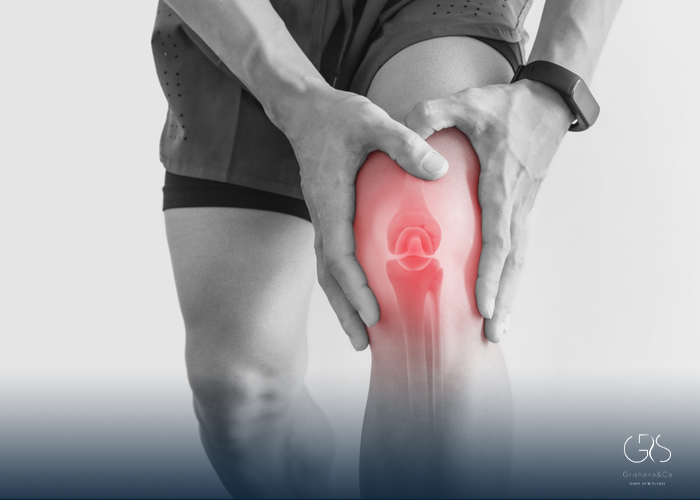Toothache can strike without warning—during a meal, late at night, or when dental care isn’t immediately available—and anyone who’s felt it knows how disruptive it can be. The throbbing, sharp, or dull pain radiating from a tooth can make even basic activities difficult. Understanding how to achieve tooth pain relief quickly and safely is essential for comfort and oral health. Tooth pain arises when nerves in the pulp of the tooth become irritated or inflamed. This may happen because of tooth decay, gum infection, cracked enamel, or trauma. Bacteria penetrate the enamel and dentin, reaching the inner pulp where nerves and blood vessels reside. The body reacts with inflammation, causing pressure and pain. Effective tooth pain relief focuses on reducing this inflammation, managing bacterial activity, and calming nerve signals until professional treatment can address the root cause. While home remedies can offer fast comfort, they do not replace dental care. Persistent pain, swelling, or fever always requires a dentist’s attention.
Understanding the Causes Behind Tooth Pain and How Tooth Pain Relief Works
Different causes produce varying types of discomfort. Cavities can cause sharp sensitivity when eating sweets or hot foods, while infections lead to deep, throbbing pain. Gum disease causes dull aches and tenderness. A fractured tooth may hurt when biting down. Identifying the source helps determine the most effective approach to tooth pain relief. The primary scientific goal of any home remedy is to target three things: bacterial control, inflammation reduction, and nerve desensitization. Remedies that cleanse the mouth, calm swollen tissue, or numb irritated nerves can provide noticeable temporary relief.

Salt Water Rinse: The Simplest Scientific Tooth Pain Relief
One of the oldest and most reliable remedies for tooth pain relief is the salt water rinse. Salt has osmotic properties—it draws fluid out of swollen tissues and inhibits bacterial growth. Mixing half a teaspoon of salt in a glass of warm water creates a gentle antiseptic solution that helps clean debris and reduce inflammation. Swish the solution for 30 seconds before spitting it out. This not only soothes gums but also creates an environment less favorable for bacterial survival. The mild alkalinity of salt water supports faster healing of irritated tissues and is safe for repeated use several times daily.
Hydrogen Peroxide Rinse: Fighting Bacteria and Inflammation
Hydrogen peroxide is another scientifically supported method for tooth pain relief. A 3% hydrogen peroxide solution, diluted half and half with water, releases oxygen when it contacts tissue. This bubbling action helps remove debris and kill bacteria, reducing the infection that contributes to pain. Rinse gently for 30 seconds and spit out completely—never swallow it. While safe for occasional use, overuse can irritate mucous membranes, so it’s best employed only once or twice a day until a dentist can evaluate the problem.
Clove Oil: Nature’s Anesthetic for Tooth Pain Relief
For centuries, clove oil has been used for tooth pain relief because it contains eugenol, a compound with natural anesthetic and anti-inflammatory effects. Scientific studies confirm eugenol blocks nerve transmission in the area where it’s applied. To use, mix a few drops of clove oil with a carrier oil such as coconut or olive oil. Apply a small amount with a cotton ball directly on the affected area and leave it for a few minutes. The numbing sensation is almost immediate, though temporary. Clove oil should never be swallowed or applied excessively, as it can irritate tissues or interact with medications.
Cold Compress: Quick External Tooth Pain Relief
If the toothache is accompanied by swelling or inflammation, applying a cold compress can offer effective tooth pain relief. Cold temperatures constrict blood vessels, reducing blood flow to the affected area and numbing pain receptors. Hold an ice pack wrapped in a thin cloth against the cheek for about 15 minutes, repeating as needed every few hours. This remedy is especially useful for tooth pain caused by trauma or swelling in the gums. The reduced nerve conduction from cold exposure gives fast, temporary comfort while you arrange for dental care.

Garlic and Herbal Solutions: Natural Antibacterial Tooth Pain Relief
Garlic is well known for its medicinal compounds, especially allicin, which has strong antibacterial and anti-inflammatory properties. Crushing a clove of garlic releases allicin, which can combat oral bacteria responsible for infections and inflammation. To use it for tooth pain relief, crush a garlic clove into a paste, mix it with a pinch of salt, and apply it directly to the sore area for a few minutes before rinsing thoroughly. Additionally, peppermint tea bags, guava leaves, and thyme oil also have natural antimicrobial actions. Peppermint provides mild numbing from menthol, while guava leaves and thyme oil fight infection-causing microbes. These herbal remedies are gentle and effective when used correctly, offering natural ways to ease discomfort at home.
(Read more about the benefits of garlic)
Over-the-Counter Support for Tooth Pain Relief
While home remedies are valuable, combining them with safe over-the-counter treatments can improve comfort. Nonsteroidal anti-inflammatory drugs (NSAIDs) such as ibuprofen or naproxen block prostaglandin production, reducing both inflammation and nerve sensitivity. They are particularly effective for tooth pain caused by swelling or infection. For localized relief, gels or ointments containing benzocaine can numb the area directly. Benzocaine works by blocking sodium channels in nerve membranes, preventing pain signals from reaching the brain. However, these products should be used only as directed and avoided in children under two years old.
Warm Compress for Deep Nerve Pain
While cold compresses help with swelling, a warm compress can provide tooth pain relief when inflammation is minimal but nerve pain persists. The gentle heat encourages blood flow, delivering oxygen and nutrients that promote healing and reduce muscular tension in the jaw. Use a warm towel or heating pad for 15 minutes at a time. Alternating between warm and cold compresses can balance swelling control and nerve relaxation.
Hydration and Oral Environment Balance
A dry mouth can worsen discomfort by allowing bacterial growth and acid buildup. Staying hydrated supports saliva production, which naturally cleanses the mouth and contains enzymes that protect teeth and gums. Chewing sugar-free gum or using saliva substitutes can maintain moisture levels, promoting faster tooth pain relief.
Avoiding Triggers During Tooth Pain Relief
Certain foods and habits can worsen tooth pain even when remedies are helping. Avoid very hot or cold foods, sugary drinks, and acidic fruits that can irritate exposed nerves or weaken enamel. Smoking slows healing and promotes infection, while alcohol can dry tissues and interfere with pain management. Sticking to soft, cool, and bland foods can make tooth pain relief more effective while preventing further irritation.
Honey and Turmeric: Anti-inflammatory Helpers
Honey and turmeric both contain bioactive compounds known for antimicrobial and anti-inflammatory effects. Applying a paste made from turmeric powder and a small amount of honey to the affected area can soothe inflammation and limit bacterial activity. Turmeric’s curcumin compound reduces oxidative stress and supports tissue repair. This natural combination is gentle and safe, making it a valuable addition to at-home tooth pain relief strategies.
Elevation and Rest: Simple But Effective Tooth Pain Relief
Lying flat can increase blood pressure in the head and worsen pain sensations. Keeping your head elevated with an extra pillow while resting can reduce throbbing discomfort. Sleep deprivation can also amplify pain sensitivity, so maintaining adequate rest supports faster recovery.
When Tooth Pain Relief at Home Isn’t Enough
While home remedies are effective for temporary relief, persistent or severe pain can indicate deeper problems. If the pain lasts longer than two days, becomes intense, or is accompanied by swelling, fever, or pus discharge, see a dentist immediately. These symptoms could signal infection, abscess, or nerve damage that requires medical treatment such as antibiotics or root canal therapy. Delaying care could allow infection to spread to other tissues.
Preventive Strategies for Long-Term Tooth Pain Relief
Prevention remains the most reliable method of tooth pain relief in the long run. Maintaining proper oral hygiene reduces the risk of decay and gum disease—the two leading causes of toothache. Brush twice a day with fluoride toothpaste, floss daily, and rinse with an antiseptic mouthwash to remove bacteria. Regular dental checkups help detect early signs of cavities or enamel wear before they lead to pain. A balanced diet with sufficient calcium, vitamin D, and phosphorus strengthens enamel, while limiting sugary snacks prevents acid damage. Using a mouthguard during sleep can protect against bruxism, a common cause of tooth sensitivity and pain.
Scientific Understanding of Tooth Pain Mechanisms
From a neurological standpoint, tooth pain originates in the trigeminal nerve system, which transmits sensory information from the face and mouth to the brain. When enamel or dentin is compromised, microscopic tubules in the dentin layer expose nerve endings. Temperature changes, sugar, or acidic foods trigger fluid movement within these tubules, stimulating nerves and producing pain. Effective tooth pain relief strategies aim to minimize stimulation of these nerve endings by reducing bacterial irritation, sealing exposed dentin, or calming inflammation through temperature therapy and anti-inflammatory agents.
Integrating Natural and Modern Tooth Pain Relief Approaches
The best approach to managing dental pain often combines traditional knowledge with modern science. Natural remedies like clove oil and salt rinses provide immediate comfort, while evidence-based treatments like NSAIDs and fluoride strengthen long-term oral defense. This integration ensures tooth pain relief that’s both holistic and effective. Being proactive about oral hygiene, controlling diet, and responding quickly to discomfort prevents minor issues from escalating into serious dental emergencies.
Conclusion
Tooth pain can be alarming, but understanding its biological basis and acting quickly with proven remedies can make all the difference. From salt water rinses and clove oil to hydrogen peroxide, cold compresses, and NSAIDs, every method targets the core causes—inflammation, bacteria, and nerve irritation. Combining these with healthy habits ensures both short-term comfort and long-term oral health. Remember that tooth pain relief at home is a bridge to professional care, not a substitute. Seeking early dental evaluation while using safe, scientifically supported remedies keeps your smile healthy and pain-free.
Sources
- Healthline, Home and Natural Remedies for Toothache Pain
- WebMD, Toothache Relief and Home Remedies
- Verywell Health, Natural Home Remedies For Toothache: Fast Relief & Effective Treatments
- Anwar MA et al., Herbal remedies for oral and dental health: a comprehensive review










